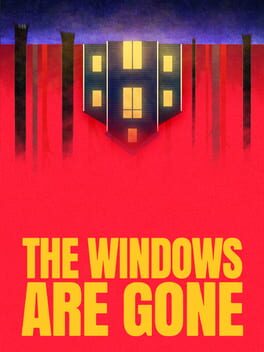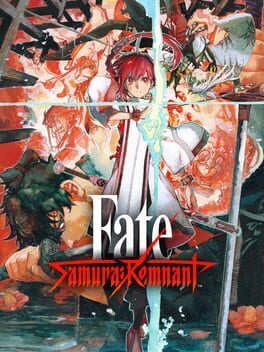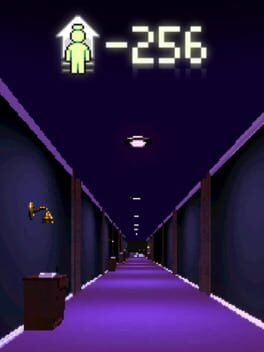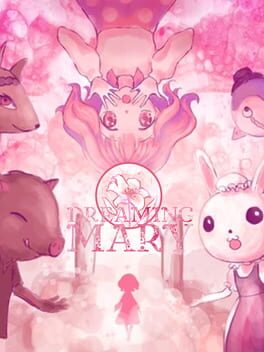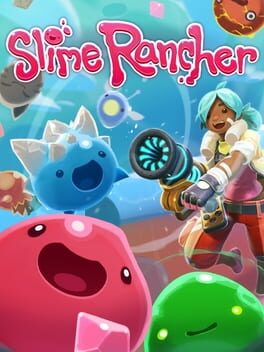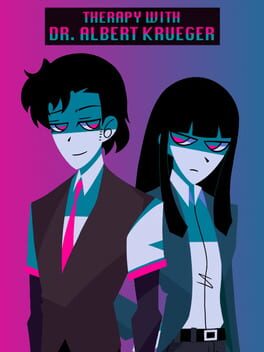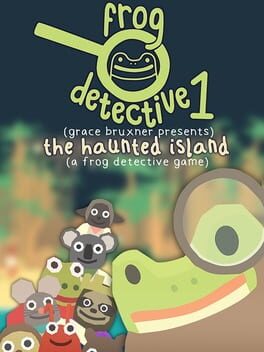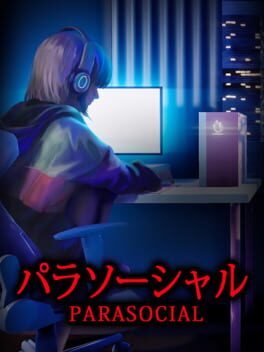01156
BACKER
i don't think i liked it :(
a richly illustrated nightmare fairy tale which warns of paranoid infighting and reaching for an unattainable ideal, broken apart by tedious and artificially difficult survival horror segments. i meet each hazard as intended and am often punished with unforgiving damage or by being taken to an instant game over, and while i fully accept that this very well might just be a skill issue on my part, it remains a significant hurdle that's barring me from engaging properly with the unfolding narrative.
i'm not unfamiliar with the death-laden rpgmaker horror-esque titles which preceded LGTS and those it draws its inspirations from, its how it contextualises such flaws that becomes an issue. there are no "skip seen dialogue" options, with the fast forward made available to us after Elise's delayed inputs just slow enough to be annoying. on that note, bosses with instant death attacks have unskippable cutscenes prior making repeat attempts patronising. two core survival systems are made redundant within one of the in-game days. perhaps most tragically, the distinct visual style which once pleased the eye beings to blend into monotony and goes unappreciated after some hours.
and like i'm sad about it! i wanted to like it! i really enjoyed how the story progressed and how my bond with my favourite lady bloomed and i liked the endings i've managed to get, but all these hiccups had me nearly just uninstalling early. it's a beautiful poetic horror title, but so many little things simply ended up overwhelming me.
a richly illustrated nightmare fairy tale which warns of paranoid infighting and reaching for an unattainable ideal, broken apart by tedious and artificially difficult survival horror segments. i meet each hazard as intended and am often punished with unforgiving damage or by being taken to an instant game over, and while i fully accept that this very well might just be a skill issue on my part, it remains a significant hurdle that's barring me from engaging properly with the unfolding narrative.
i'm not unfamiliar with the death-laden rpgmaker horror-esque titles which preceded LGTS and those it draws its inspirations from, its how it contextualises such flaws that becomes an issue. there are no "skip seen dialogue" options, with the fast forward made available to us after Elise's delayed inputs just slow enough to be annoying. on that note, bosses with instant death attacks have unskippable cutscenes prior making repeat attempts patronising. two core survival systems are made redundant within one of the in-game days. perhaps most tragically, the distinct visual style which once pleased the eye beings to blend into monotony and goes unappreciated after some hours.
and like i'm sad about it! i wanted to like it! i really enjoyed how the story progressed and how my bond with my favourite lady bloomed and i liked the endings i've managed to get, but all these hiccups had me nearly just uninstalling early. it's a beautiful poetic horror title, but so many little things simply ended up overwhelming me.
2022
2022
thrumming, oppressive voyeurism, the intimacy of their lives framed by your window through a sheet of artificial rain. it runs short but left quite the impact on me for its memorable prerendered backgrounds and script, this developer has nailed the early 3D visual aesthetic across their projects reminiscent of smaller PSX-era titles' FMV cutscenes. keep an eye on them!
2023
2023
2023
“The youth wields his swords with the same immediacy as drawing breath. The youth wields his swords as if they were the meaning of life itself. The youth wields his swords, seeking the moon far above this changing world—”
This is a bit of a generous or maybe guilty 5* on my part, but F/SR was just such a highly anticipated delight from start to finish and I feel the need to express my affections adequately. A Koei Tecmo musou-like grounded in the mysticism and historical reverence of the Fate franchise with a sprinkle of setting-significant morality. This writer is not entirely unfamiliar with Fate properties, admittedly I intended to finish at least the Saber route of F/SN prior to F/SR’s launch though time slipped away. While it’s fair to say the moment to moment fetchquest-iness of the mission based narrative quickly becomes somewhat meandering long before one can confidently skip through content for the sake of completion, F/SR excels in the development of its storied cast and all creative endeavours (visual cohesion and aesthetics, score, and design), with the highlight being the bond formed between a troubled man and the Servant at his side.
A little warning, there will be some spoiler material below to better discuss one of my new favourite characters, particularly a full spoiler description of his arc and one of the game’s endings. This writing is mainly directed towards either those who have played to completion already or those who don’t intend to play at all to freely infodump to.
To admittedly brush over a highly significant chapter of history, F/SR seats itself firmly within blossoming Edo period Japan some time after the bloody Shimabara Rebellion capping off the Sengoku era, a time of societal stability and peace after years of conflict. We follow Miyamoto Iori, a diligent swordsman making ends meet through odd jobs while further perfecting the teachings of his late master of which he is the sole disciple, and being doted on by fellow local Kaya, a bright young girl raised alongside him and adopted into another family. Destiny calls when Iori is chosen to play a role in the Waxing Moon Ritual, a battle far greater than himself in which magically adept Mages clamour at a chance for a wish to be granted, each paired with a Servant of a predestined class; historical legends with such influence and strength in life, they are given a chance in death to fulfil the ideals of another. Though this is typical Fate preamble, it’s the background setting and the Waxing Moon itself that creates such a fantastic contextual narrative to an age of pacifism.
It’s when Iori is almost slain and he makes a fervent wish to live that Saber is summoned forth, and his peaceful days are tainted forever.
“Perhaps that child knew his fate, that he would be just another corpse by dawn.”
For an action game sourced from what can arguably be said by many to be the most iconic visual novel written, its narrative presentation is grounded in its influence with dialogue delivered alongside portrait illustration cut-ins interspersed with shockingly well animated full motion cutscenes. I understand many “anime” games follow this typical formula, but the skill of the voice cast and textured quality of artist Rei Wataru’s artwork on display keeps F/SR engaging. Hibiku Yamamura brings an energetic and competitive voice with the ability to express a most gentle sadness as Saber, though the standout role has to be Nobuhiko Okamoto’s as the tragic Chiemon, Iori’s mirror and Master of Lancer in the Ritual. I cannot praise his talent enough, bringing to life a man consumed by flames desperate to burn the world himself, his low and graveled tone impeccably matched to his appearance and personal story.
On the note of other cast members, the Masters and Servants debuting in this work are compelling at best and apathetic at worst, falling along a spectrum of quality from the level of Iori, Saber, Chiemon, Caster, and Shousetsu, to underdeveloped and poorly utilised characters like Dorothea Coyett, Zheng Chenggong, and Rider. The latter three, to remain somewhat spoiler free, remain aimless at best or take on incredibly out of character streaks at worst, kind of middling around the sides of the other characters without ever achieving the same agency or depth; Zheng is particularly guilty of this as he ping pongs in several directions yet doesn’t develop nor reach a satisfying conclusion, which was particularly disappointing as I had high hopes for his own arc from previews before release.
While they often don’t express themselves well with the 3D models that are reminiscent of F/SR’s seventh gen predecessors, artist and designer Rei Wataru’s illustrated portraits absolutely carry the game’s presentation. The brightly designed cast I see is commonly agreed to be the title’s highlight, each character being rendered in a traditional textured art style with bold splashes of colour. Wataru has improved much since providing a character design for Fate/Grand Order, as well as working concurrently alongside F/SN’s development on an ongoing manga adaptation of an arc from the aforementioned mobile release, boasting some of the most beautiful cover illustrations I’ve seen in the industry. Their artwork feels right at home married to Fate imagery and its intricately designed Servants, and I’ve been overjoyed to see them share some additional sketches of F/SN’s cast over on twitter. If you’re a fan I really recommend checking out a gallery of the design works as well as the famitsu artist interview which includes some behind the scenes concept artwork; I really love how unique Iori appeared once upon a time!
“Honour in taking others’ lives ended in my time. No more war, only the path of peace remains. The battle fever has broken.”
While F/SR carries the legacy of bread and butter Normal Attack Into Heavy Attack combo structure of most musou, the implementation of the narratively significant sword styles of Niten Ichi-ryū adds some seasoning as well as the way it motivates the player to carefully consider which heavy attack to use; choosing an anti-personnel AOE finisher can be an embarrassment at worst and a waste of time at best when faced against a single target. The organic realisation of each sword style over the course of the storyline reflects protagonist Iori’s honing of his posthumous master’s teachings, as well as his own personal journey and realisation of his ideals, though even I admit this does add little to the overall enjoyment of combat.
I see a common criticism of the sword styles is that you’re funnelled into using what is the most broken combination, that being padding your HP with the ridiculous amount of rations you’re provided to optimise the Void style and abusing the riposte reactions. I can’t deny this, as I really only bounced around between Wind, Void, and Earth styles for shielded opponents, crowd control, and encounters which demanded defensive play (battle recollections in which you face stronger past opponents get really cruel later on) respectively. Something I feel goes unmentioned though is the Afterglow effect, which grants Iori a certain effect when transitioning from one stance to another after some time of synergy, rewarding deft no-damage play with a small contextual buff. The system encourages jumping between postures to receive their effects, enhancing what could be your favourite into something greater.
It’s true that at times combat can feel quite mindless though, and I feel what keeps me engaged more often than not is the enemy design and quality of general battle animations, though the real star is the incredible score. The soundscape is romantic and heroic, accompanying Iori with both the violence he faces and the few quiet moments of peace he experiences. Some of my standouts have to be “Every Day is a Good Day”, the theme of his own Mage’s domicile, and the swelling “Swords and Confidants”, a pinpoint pang straight to my heart.
“He was so upstanding, so willing to listen. But at times, he’d suddenly go silent.”
I’ve talked a bit about Iori but elaborated little, so let’s get into that now. Another warning that spoilers will be present regarding both him and Saber as well as one of the endings available on a second playthrough.
From our first impression of Iori, we see a magically unskilled rōnin pursued for his life by a samurai of some nobility and an undoubtedly supernatural armoured entity, painting him as somewhat defenceless, crossing swords with forces way outside both his own realm of possibility and level of skill. This is the only moment where we see Iori utterly outclassed, later encounters see him weakened by external circumstances such as Assassin’s toxin, otherwise he matches the blows delivered to him every single time; I had read criticism online regarding F/SN’s presentation of Iori’s strength disputed with Kinoko Nasu’s claim that Masters were stronger the further into history one travels, though I cannot confirm the veracity of that tidbit myself. My point is that Iori remains symbolically stronger for having summoned forth Saber to save his life, for reasons other than the obvious.
He remains a straight-laced stern man for a majority of social encounters, really only breaking his frown in the presence of Kaya or in the face of Saber’s more playful antics. He instead pours all his effort and attention into the practice of his swordplay to the point of starving himself, forever pursuing an impossible ideal and being left wanting. This is a fantastic early game window into his true nature as both a person and fighter, a subtlety Saber begins to cotton on to following his mastery of the Fire stance; one that pointedly gains more power once Iori is at critically low health. It’s through Saber expressing interest at studying the Niten Ichi-ryū style and Iori admiring, or rather scrutinising, Saber’s own swordplay that we see their relationship deepen and an intimacy between them grow, sharing their pasts and memories through dreams in addition to spending almost every waking moment beside each other. Alongside the visual direction, their bond is definitely what makes this game so special, and I’ve seen them skyrocket to the top of Type Moon tierlists among friends.
In the ending to one’s first playthrough (following an insanely cool last boss encounter that massively overshadows another) and additional dialogue available in playing through once again, more light is shed on Iori’s inner disquiet. The Ritual is over and the sun rises as he ferries Kaya home safely in his arms, yet he remains ultimately unsatisfied with this outcome. If such a tranquil scene displeases him, what more could he possibly desire?
“I once saw a sword that reminded me of the moon. There is no other reason.”
Musashi talks offhand of something dwelling inside our protagonist, and as more light is shed on Iori’s truth Saber notes how his blood churns when faced against stronger opponents, and grows concerned with his attachment to combat during what should be an era of peace. There are times where they’re even tainted by Iori’s orders, returning pleased to have eradicated many in his stead and praised for doing so. It all culminates in the mastery of the Fire stance once more, in which Iori spiritually sheds what he perceives as his excess. He reveals that his kindness and consideration for others is all just a facade, a mere strategy to better fight and even kill with.
It’s through this transcendence shown to us only through a second playthrough that ties together F/SN’s compelling character narrative. His encounter with both the Ritual and Saber themself grants him a window to something beyond what he’s been taught, a fated event which could only climax in a heartbreaking duel bathed in moonlight. Outpacing his master with a rival’s iconic technique and claiming the Waxing Moon for himself, Saber draws their sword against him upon learning of his terrifying ideal: to continue the Ritual for ages to come, drawing warriors of great strength so he might slay them himself and stand atop a mound of their corpses. For Iori, surviving the Ritual was never the goal, and what he truly wished for was endless bloodshed in his wake.
His life ends with a sword demon wearing his face having been outwitted by his closest companion, dying a foolish rōnin born between eras chasing a past of historically informed glorified slaughter that was forever out of his reach. I really do just love Iori’s pretence as the do-good protagonist betrayed entirely by what has slowly been blossoming deep within his soul since he was a child, and how Saber’s own past is this beautifully poetic reply to his argument.
“As a sword, I could go no further… But haven’t I been blessed with a true friend?”
I could go on waxing poetic about ludonarrative harmony and how the player is just as unsatisfied with the NG ending as Iori which pushes him further over the brink of destruction, but I wager I’ve already looked far too much into this game already. To touch on something I couldn’t find space for, I liked the way F/SN challenged pre established narrative tropes and themes present across the Fate franchise, and how the property’s own perception of those from history and myth can taint the truth. I warmly anticipate how these additions to the large pool of characters might be utilised in future appearances, and though I vowed to never take a gacha seriously again, I remain terrified that I may break my self-imposed F/GO ban if Saber makes an appearance. If you like Musashi you’ll like this game, though her appearances got kind of annoying towards the end.
Crazy Edo period gay sex!
This is a bit of a generous or maybe guilty 5* on my part, but F/SR was just such a highly anticipated delight from start to finish and I feel the need to express my affections adequately. A Koei Tecmo musou-like grounded in the mysticism and historical reverence of the Fate franchise with a sprinkle of setting-significant morality. This writer is not entirely unfamiliar with Fate properties, admittedly I intended to finish at least the Saber route of F/SN prior to F/SR’s launch though time slipped away. While it’s fair to say the moment to moment fetchquest-iness of the mission based narrative quickly becomes somewhat meandering long before one can confidently skip through content for the sake of completion, F/SR excels in the development of its storied cast and all creative endeavours (visual cohesion and aesthetics, score, and design), with the highlight being the bond formed between a troubled man and the Servant at his side.
A little warning, there will be some spoiler material below to better discuss one of my new favourite characters, particularly a full spoiler description of his arc and one of the game’s endings. This writing is mainly directed towards either those who have played to completion already or those who don’t intend to play at all to freely infodump to.
To admittedly brush over a highly significant chapter of history, F/SR seats itself firmly within blossoming Edo period Japan some time after the bloody Shimabara Rebellion capping off the Sengoku era, a time of societal stability and peace after years of conflict. We follow Miyamoto Iori, a diligent swordsman making ends meet through odd jobs while further perfecting the teachings of his late master of which he is the sole disciple, and being doted on by fellow local Kaya, a bright young girl raised alongside him and adopted into another family. Destiny calls when Iori is chosen to play a role in the Waxing Moon Ritual, a battle far greater than himself in which magically adept Mages clamour at a chance for a wish to be granted, each paired with a Servant of a predestined class; historical legends with such influence and strength in life, they are given a chance in death to fulfil the ideals of another. Though this is typical Fate preamble, it’s the background setting and the Waxing Moon itself that creates such a fantastic contextual narrative to an age of pacifism.
It’s when Iori is almost slain and he makes a fervent wish to live that Saber is summoned forth, and his peaceful days are tainted forever.
“Perhaps that child knew his fate, that he would be just another corpse by dawn.”
For an action game sourced from what can arguably be said by many to be the most iconic visual novel written, its narrative presentation is grounded in its influence with dialogue delivered alongside portrait illustration cut-ins interspersed with shockingly well animated full motion cutscenes. I understand many “anime” games follow this typical formula, but the skill of the voice cast and textured quality of artist Rei Wataru’s artwork on display keeps F/SR engaging. Hibiku Yamamura brings an energetic and competitive voice with the ability to express a most gentle sadness as Saber, though the standout role has to be Nobuhiko Okamoto’s as the tragic Chiemon, Iori’s mirror and Master of Lancer in the Ritual. I cannot praise his talent enough, bringing to life a man consumed by flames desperate to burn the world himself, his low and graveled tone impeccably matched to his appearance and personal story.
On the note of other cast members, the Masters and Servants debuting in this work are compelling at best and apathetic at worst, falling along a spectrum of quality from the level of Iori, Saber, Chiemon, Caster, and Shousetsu, to underdeveloped and poorly utilised characters like Dorothea Coyett, Zheng Chenggong, and Rider. The latter three, to remain somewhat spoiler free, remain aimless at best or take on incredibly out of character streaks at worst, kind of middling around the sides of the other characters without ever achieving the same agency or depth; Zheng is particularly guilty of this as he ping pongs in several directions yet doesn’t develop nor reach a satisfying conclusion, which was particularly disappointing as I had high hopes for his own arc from previews before release.
While they often don’t express themselves well with the 3D models that are reminiscent of F/SR’s seventh gen predecessors, artist and designer Rei Wataru’s illustrated portraits absolutely carry the game’s presentation. The brightly designed cast I see is commonly agreed to be the title’s highlight, each character being rendered in a traditional textured art style with bold splashes of colour. Wataru has improved much since providing a character design for Fate/Grand Order, as well as working concurrently alongside F/SN’s development on an ongoing manga adaptation of an arc from the aforementioned mobile release, boasting some of the most beautiful cover illustrations I’ve seen in the industry. Their artwork feels right at home married to Fate imagery and its intricately designed Servants, and I’ve been overjoyed to see them share some additional sketches of F/SN’s cast over on twitter. If you’re a fan I really recommend checking out a gallery of the design works as well as the famitsu artist interview which includes some behind the scenes concept artwork; I really love how unique Iori appeared once upon a time!
“Honour in taking others’ lives ended in my time. No more war, only the path of peace remains. The battle fever has broken.”
While F/SR carries the legacy of bread and butter Normal Attack Into Heavy Attack combo structure of most musou, the implementation of the narratively significant sword styles of Niten Ichi-ryū adds some seasoning as well as the way it motivates the player to carefully consider which heavy attack to use; choosing an anti-personnel AOE finisher can be an embarrassment at worst and a waste of time at best when faced against a single target. The organic realisation of each sword style over the course of the storyline reflects protagonist Iori’s honing of his posthumous master’s teachings, as well as his own personal journey and realisation of his ideals, though even I admit this does add little to the overall enjoyment of combat.
I see a common criticism of the sword styles is that you’re funnelled into using what is the most broken combination, that being padding your HP with the ridiculous amount of rations you’re provided to optimise the Void style and abusing the riposte reactions. I can’t deny this, as I really only bounced around between Wind, Void, and Earth styles for shielded opponents, crowd control, and encounters which demanded defensive play (battle recollections in which you face stronger past opponents get really cruel later on) respectively. Something I feel goes unmentioned though is the Afterglow effect, which grants Iori a certain effect when transitioning from one stance to another after some time of synergy, rewarding deft no-damage play with a small contextual buff. The system encourages jumping between postures to receive their effects, enhancing what could be your favourite into something greater.
It’s true that at times combat can feel quite mindless though, and I feel what keeps me engaged more often than not is the enemy design and quality of general battle animations, though the real star is the incredible score. The soundscape is romantic and heroic, accompanying Iori with both the violence he faces and the few quiet moments of peace he experiences. Some of my standouts have to be “Every Day is a Good Day”, the theme of his own Mage’s domicile, and the swelling “Swords and Confidants”, a pinpoint pang straight to my heart.
“He was so upstanding, so willing to listen. But at times, he’d suddenly go silent.”
I’ve talked a bit about Iori but elaborated little, so let’s get into that now. Another warning that spoilers will be present regarding both him and Saber as well as one of the endings available on a second playthrough.
From our first impression of Iori, we see a magically unskilled rōnin pursued for his life by a samurai of some nobility and an undoubtedly supernatural armoured entity, painting him as somewhat defenceless, crossing swords with forces way outside both his own realm of possibility and level of skill. This is the only moment where we see Iori utterly outclassed, later encounters see him weakened by external circumstances such as Assassin’s toxin, otherwise he matches the blows delivered to him every single time; I had read criticism online regarding F/SN’s presentation of Iori’s strength disputed with Kinoko Nasu’s claim that Masters were stronger the further into history one travels, though I cannot confirm the veracity of that tidbit myself. My point is that Iori remains symbolically stronger for having summoned forth Saber to save his life, for reasons other than the obvious.
He remains a straight-laced stern man for a majority of social encounters, really only breaking his frown in the presence of Kaya or in the face of Saber’s more playful antics. He instead pours all his effort and attention into the practice of his swordplay to the point of starving himself, forever pursuing an impossible ideal and being left wanting. This is a fantastic early game window into his true nature as both a person and fighter, a subtlety Saber begins to cotton on to following his mastery of the Fire stance; one that pointedly gains more power once Iori is at critically low health. It’s through Saber expressing interest at studying the Niten Ichi-ryū style and Iori admiring, or rather scrutinising, Saber’s own swordplay that we see their relationship deepen and an intimacy between them grow, sharing their pasts and memories through dreams in addition to spending almost every waking moment beside each other. Alongside the visual direction, their bond is definitely what makes this game so special, and I’ve seen them skyrocket to the top of Type Moon tierlists among friends.
In the ending to one’s first playthrough (following an insanely cool last boss encounter that massively overshadows another) and additional dialogue available in playing through once again, more light is shed on Iori’s inner disquiet. The Ritual is over and the sun rises as he ferries Kaya home safely in his arms, yet he remains ultimately unsatisfied with this outcome. If such a tranquil scene displeases him, what more could he possibly desire?
“I once saw a sword that reminded me of the moon. There is no other reason.”
Musashi talks offhand of something dwelling inside our protagonist, and as more light is shed on Iori’s truth Saber notes how his blood churns when faced against stronger opponents, and grows concerned with his attachment to combat during what should be an era of peace. There are times where they’re even tainted by Iori’s orders, returning pleased to have eradicated many in his stead and praised for doing so. It all culminates in the mastery of the Fire stance once more, in which Iori spiritually sheds what he perceives as his excess. He reveals that his kindness and consideration for others is all just a facade, a mere strategy to better fight and even kill with.
It’s through this transcendence shown to us only through a second playthrough that ties together F/SN’s compelling character narrative. His encounter with both the Ritual and Saber themself grants him a window to something beyond what he’s been taught, a fated event which could only climax in a heartbreaking duel bathed in moonlight. Outpacing his master with a rival’s iconic technique and claiming the Waxing Moon for himself, Saber draws their sword against him upon learning of his terrifying ideal: to continue the Ritual for ages to come, drawing warriors of great strength so he might slay them himself and stand atop a mound of their corpses. For Iori, surviving the Ritual was never the goal, and what he truly wished for was endless bloodshed in his wake.
His life ends with a sword demon wearing his face having been outwitted by his closest companion, dying a foolish rōnin born between eras chasing a past of historically informed glorified slaughter that was forever out of his reach. I really do just love Iori’s pretence as the do-good protagonist betrayed entirely by what has slowly been blossoming deep within his soul since he was a child, and how Saber’s own past is this beautifully poetic reply to his argument.
“As a sword, I could go no further… But haven’t I been blessed with a true friend?”
I could go on waxing poetic about ludonarrative harmony and how the player is just as unsatisfied with the NG ending as Iori which pushes him further over the brink of destruction, but I wager I’ve already looked far too much into this game already. To touch on something I couldn’t find space for, I liked the way F/SN challenged pre established narrative tropes and themes present across the Fate franchise, and how the property’s own perception of those from history and myth can taint the truth. I warmly anticipate how these additions to the large pool of characters might be utilised in future appearances, and though I vowed to never take a gacha seriously again, I remain terrified that I may break my self-imposed F/GO ban if Saber makes an appearance. If you like Musashi you’ll like this game, though her appearances got kind of annoying towards the end.
Crazy Edo period gay sex!
2023
silly goofy, a lot of the line delivery and general atmosphere had me smiling a lot but there isn't much else to it. visual aesthetics and unspoken world building through npc placement rocks, though a later maze/puzzle/whatever section absolutely bites. i am also admittedly a bit smitten with the workers..............
2014
2016
2023
2023
as someone with an interest in horror gaming, i follow plenty of horror youtubers and have watched full playthroughs of every Chilla's Art release. they're jank things, speedy turnover reused-asset experiences centered on societal, social, and even supernatural incidents grounded in Japanese culture, but things i always generally enjoyed for some aspect or another. i found Chilla's prior release Night Security actually pretty unique and enjoyable even if just as a viewer, and decided i might actually play the studio's next game myself for once.
Parasocial taught me why i prefer to watch these releases rather than play them myself. there's some immediately interesting concepts at play with the streaming interface, as well as the very real terror of being followed i've personally experienced leaving me a bit shaken. however, the crippling technical performance despite receiving feedback in a patron-exclusive beta made the game nearly unplayable in its current state, as well as the cheeky self-references having the opposite effect.
it's upsetting buying games (particularly indies, which i'm almost always willing to forgive) on launch is no longer encouraged as they are often not ready, and while i understand Chilla's is a two-man project, with their catalogue of works, experience, and fervent fan support i expected a smoother landing. the team's repeated history of utilising young women enduring abuse or manipulation as objects of shock horror bad ends is questionable besides, a trend Parasocial maintains.
Parasocial taught me why i prefer to watch these releases rather than play them myself. there's some immediately interesting concepts at play with the streaming interface, as well as the very real terror of being followed i've personally experienced leaving me a bit shaken. however, the crippling technical performance despite receiving feedback in a patron-exclusive beta made the game nearly unplayable in its current state, as well as the cheeky self-references having the opposite effect.
it's upsetting buying games (particularly indies, which i'm almost always willing to forgive) on launch is no longer encouraged as they are often not ready, and while i understand Chilla's is a two-man project, with their catalogue of works, experience, and fervent fan support i expected a smoother landing. the team's repeated history of utilising young women enduring abuse or manipulation as objects of shock horror bad ends is questionable besides, a trend Parasocial maintains.




